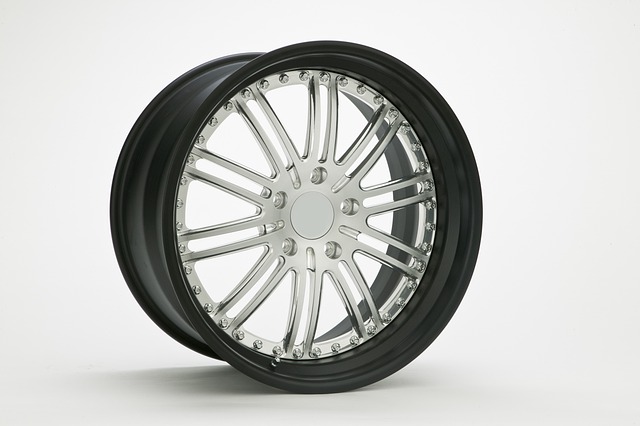Learn how to seamlessly navigate the process of registering your car in California with our comprehensive guide. From understanding state requirements to securing the necessary documents, we break down every step. Discover the importance of a DMV VIN verifier for accurate vehicle identity verification. By following our detailed instructions, you’ll efficiently complete the registration process, ensuring a smooth and stress-free experience.
- Understand California Car Registration Requirements
- Gather Necessary Documents for Car Registration
- Visit Your Local DMV: Step-by-Step Guide
- Verify Vehicle Identity with VIN Number Check
- Pay Registration Fees and Receive Your Plate
Understand California Car Registration Requirements

Before registering your car in California, it’s crucial to understand the state’s specific requirements. The California Department of Motor Vehicles (DMV) mandates several key steps for ensuring your vehicle complies with safety and environmental standards. One essential aspect is the verification of the Vehicle Identification Number (VIN). This unique code, found on a sticker or plate inside the car, serves as a permanent identifier. Utilize a DMV VIN verifier or mobile vin verification tools to ensure the vehicle’s history is clear and it hasn’t been reported stolen. Additionally, you’ll need proof of insurance and completion of a safety inspection, often conducted through a mobile vin inspection or local repair shop.
California has stringent regulations regarding emissions and safety features, so it’s vital to have your car inspected according to these standards. The process involves checking various components, including lights, brakes, tires, and exhaust systems. Ensure all paperwork is in order, including ownership transfer documents, before visiting a DMV office for registration. Proper documentation and adherence to these requirements are necessary to avoid delays or issues during the registration process.
Gather Necessary Documents for Car Registration

Before heading to the California Department of Motor Vehicles (DMV), make sure you have all the required documents for car registration. This process involves several crucial steps, and having everything ready ensures a smoother experience. Firstly, gather the vehicle’s title, which is typically issued by the seller or previous owner after transferring ownership. Additionally, obtain the Certificate of Insurance (COI) to prove that your vehicle has adequate financial liability insurance coverage.
Another essential document is the Vehicle Identification Number (VIN) verifier, often provided by your auto insurance company or available through a DMV-approved mobile VIN verification service. This unique code is used to identify and verify specific details about your car. A mobile VIN inspection or mobile VIN verifier app can be handy for quickly accessing this information before visiting the DMV.
Visit Your Local DMV: Step-by-Step Guide

Visit Your Local DMV for a Hands-On Approach:
Step one involves visiting your nearest California Department of Motor Vehicles (DMV) office. This is where you’ll complete most of the registration process, including providing essential documents and ensuring your vehicle’s eligibility. Upon arrival, locate the dedicated window or counter for vehicle registration and have your required documentation ready.
The DMV staff will guide you through the steps, which include filling out forms, paying registration fees, and conducting a thorough inspection. They’ll verify your vehicle’s Vehicle Identification Number (VIN) using advanced tools like their VIN verifier to check for any discrepancies or theft reports. For added convenience, many DMV locations now offer online appointment booking, ensuring a smoother experience. Alternatively, consider the mobile vin verification option if available in your area, allowing you to complete part of the process from the comfort of your home.
Verify Vehicle Identity with VIN Number Check

Before you begin the registration process, it’s crucial to ensure your vehicle’s identity is verified. One effective way to do this is by checking the Vehicle Identification Number (VIN). The VIN is a unique code that can be used to gather essential information about your car, including its make, model, year, and even history of ownership. You can easily verify your vehicle’s VIN through a DMV vin verifier or mobile vin verification services. These tools are designed to cross-reference the provided VIN against vast databases, ensuring accuracy.
A mobile vin verifier or inspector can be particularly handy as it allows you to perform this check conveniently before submitting your registration documents. This step is vital to avoid any potential issues during the registration process, as an accurate VIN ensures that all information associated with your car is correct and up-to-date.
Pay Registration Fees and Receive Your Plate

After completing your vehicle’s inspection and ensuring all necessary documents are ready, it’s time to pay the registration fees. The California DMV offers several payment options, typically including credit card, debit card, or cash. Be prepared with the required fees, which can vary based on the type of vehicle and any additional services you may select. Once your payment is processed, the DMV will issue your vehicle’s license plate. In some cases, they might provide a temporary plate while waiting for the permanent one to be manufactured, typically taking around 10-14 days.
For a smoother process, consider using a mobile vin verification service, which allows you to complete certain steps, like inspecting your vehicle’s VIN (Vehicle Identification Number), remotely. This can save time and ensure everything is in order before heading to the DMV. Remember that a valid vin inspection is crucial for registration, so don’t skip this step.
Registering a car in California is a straightforward process that requires understanding key requirements, gathering essential documents, and visiting your local DMV. By following our step-by-step guide, including using a reliable DMV VIN verifier to confirm vehicle identity, you can efficiently complete the registration and hit the road legally. Remember to keep your paperwork organized and up-to-date for smooth future transactions.
